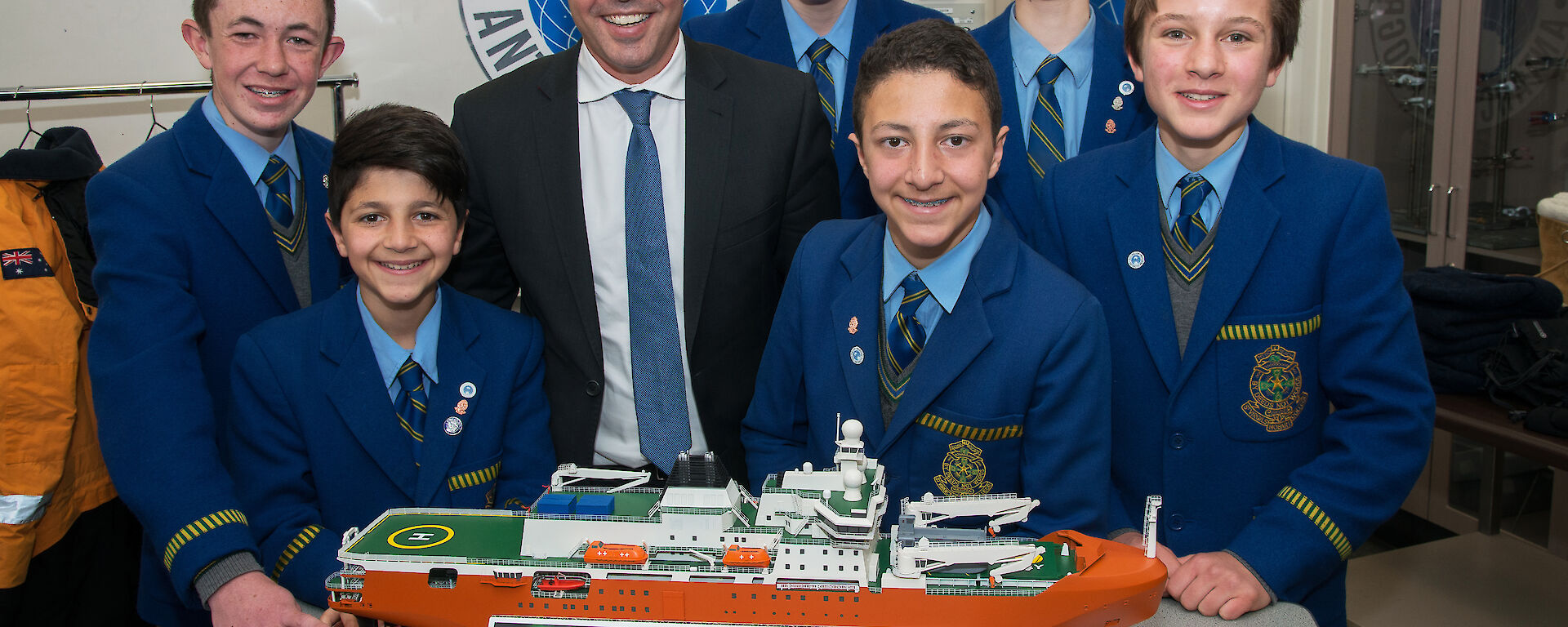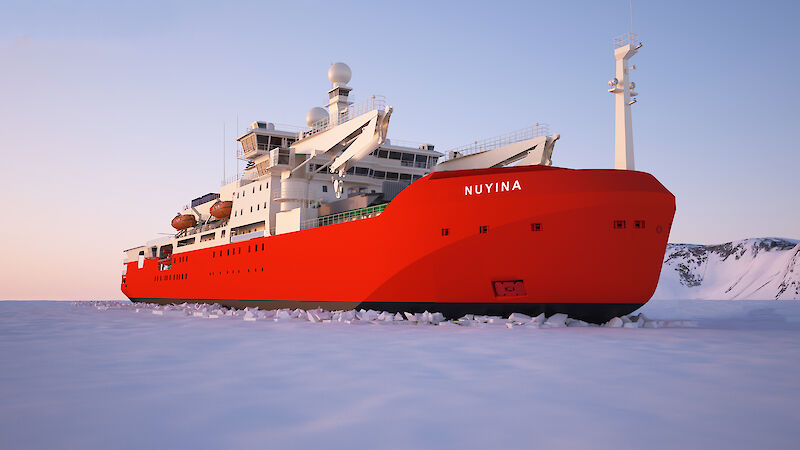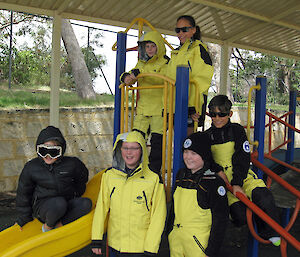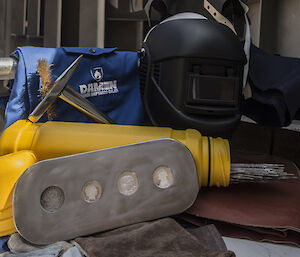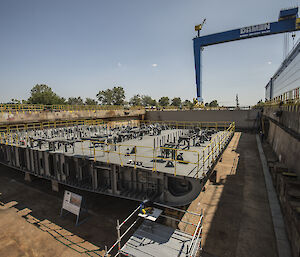More than 800 entries were received from primary and secondary schools across all states and territories, with the winning entries provided by St Virgil’s College in Hobart, Tasmania, and Secret Harbour Primary School, near Perth in Western Australia.
As this magazine went to press the 12 students were preparing for their flight to Wilkins Aerodrome, to experience the icy continent first hand, including exploring an Antarctic field camp, drilling an ice core and taking scientific observations.
Four runner-up prizes of a $500 technology voucher were awarded to Rokeby Primary School in Tasmania, Ulladulla High School in New South Wales, Essex Heights Primary School in Victoria and Cowell Area School in South Australia.
More than 20 per cent of competition entries suggested Aboriginal names. The Tasmanian Aboriginal Centre (TAC), which approved the use of nuyina, said it was a fitting choice, as Aborigines of lutruwita (Tasmania) have always been seafarers and builders of seafaring vessels.
Ms Daisy Allan, a Language Worker from the TAC, said the word nuyina was first shared by Aborigines with government agent George Augustus Robinson in August 1831, near Ansons Bay on Tasmania’s north-east. He wrote in his journal: “The natives last night saw an electric spark in the atmosphere, at which they appeared frightened, and one of them told them not to mention it as they would all be sick if they did…the natives of Cape Portland call it noi.hee.ner”. He also referenced the word in October 1837 on Flinders Island, noting it as no.hoi.ner.
“The original sounds of the word are captured in the standardised spelling system of palawa kani as ‘nuyina’,” Ms Allan said.
“The use of the word honours Tasmanian Aboriginal language and its continuing adaptations over hundreds of years to new circumstances.”
The name also connects the new ship with several Australian Antarctic ships named after the Southern Lights. Sir Douglas Mawson’s ship, used for the first Australian-led expedition to the Antarctic in 1911, was the SY Aurora, while our currently serving icebreaker is the RSV Aurora Australis.
Focus now turns to construction of the ship, which began with a steel cutting ceremony in Romania in late May, followed by a keel laying ceremony in August.
The ship is being built by the Damen Shipyards Group in Galati, Romania, a leading shipbuilder with experience constructing scientific, hydrographic, naval, and ice class ships.
Australian Antarctic Division Modernisation Program Manager, Rob Bryson, said the steel cutting was the first tangible step of the ship build.
“Steel cutting involves the use of computer-controlled high-energy cutting machines, which use a combination of laser and plasma technology as well as high-pressure water to slice up large pieces of plate steel, which can be up to 130mm thick,” Mr Bryson said.
“These first pieces of steel will start to form the base of the ship, and are one of 57 blocks, some weighing around 300 tonnes, to be put together to form the icebreaker over the next two years of construction.”
During the keel-laying ceremony in August, maritime tradition was observed with a silver 50 cent piece (newly minted by the Royal Australian Mint), welded on to the keel by the Australian Antarctic Division’s Director, Dr Nick Gales.
Coins from Romania, Holland and Denmark were also welded alongside the Australian coin in recognition of each country’s contribution to the design and construction of the ship. The coins will remain in place for the life of the ship, while duplicates will be placed on the bridge of the ship.
“The keel laying is the first major milestone in the construction of this 160m ship, which will carry scientists and supplies to Antarctica for decades to come,” Dr Gales said.
“According to maritime tradition, attaching coins to the keel brings fair winds, speed and good luck.
“The four coins acknowledge that the original concept for ship was developed by a Danish company, the design and construction is being managed by a Dutch company, and the icebreaker is being built in Romania.”
Almost 5000 tonnes of steel has been cut so far, roughly half the vessel steel weight, and construction has now moved into the dry dock where the keel was laid.
The icebreaker is the centrepiece of the Australian Antarctic Strategy and 20 Year Action Plan launched in April 2016. The ship will arrive in its home port of Hobart in 2020 and make its maiden voyage to Antarctica during the 2020–21 season.
Wendy Pyper and Eliza Grey
Australian Antarctic Division

